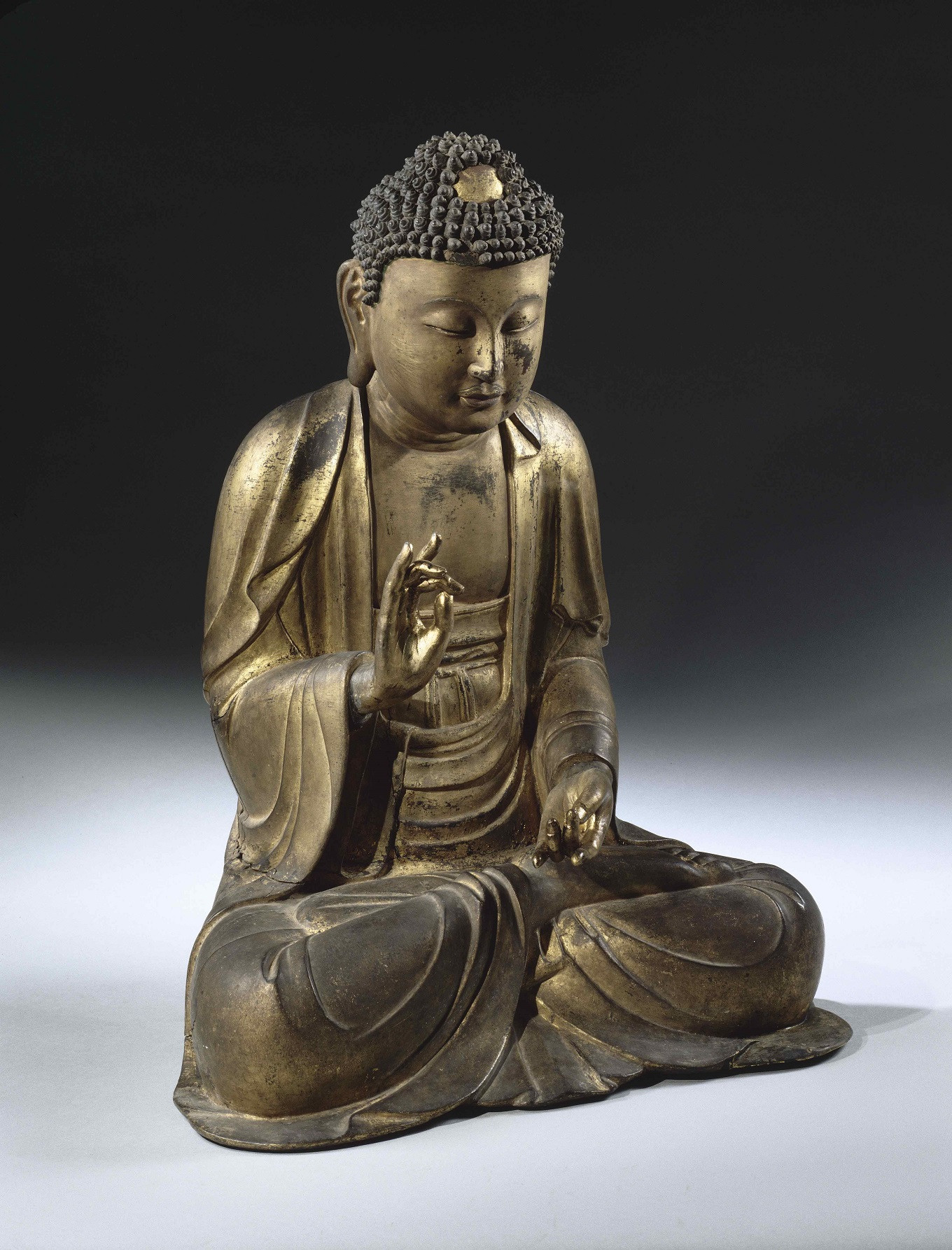Popular Reads
Top Results
Can't find what you're looking for?
View all search resultsPopular Reads
Top Results
Can't find what you're looking for?
View all search results'The Golden Legend' exhibition in Paris shows Buddhism through the ages
The exhibition is the first in France entirely dedicated to the Buddha’s life, and to the diffusion of Buddhism in Asia centered on the different traditions, with sources from Afghanistan, Japan, China and Indonesia, among other places.
Change text size
Gift Premium Articles
to Anyone
T
he Guimet Museum of Asian Art in Paris, home to beautiful Asian artifacts of various religious origins and temporary exhibitions, was founded in 1889 by Emile Guimet, a chemical industrialist and philanthropist from Lyon who focuses on Asian art and artifacts.
The museum’s present building, with its distinctive domed roof, stands on the original site, although it has been refurbished several times since 1889.
Even after Guimet’s demise in 1918, objects, either bequeathed to the museum or assembled by researchers who were associated with the museum, added to the ever-growing reserve.
Guimet first traveled through Asia between 1876 and 1877 where he was attracted to Buddhist priests of different sects in Japan. The industrialist acquired many artifacts, works of art and texts. The cornerstone of his collection was deposited in his Paris museum, complete with a library.
The museum, no longer a private institution, is administered by the French state. It is located on 6, Place d’Iéna in the 16th arrondissement of Paris.
The curator of an impressive exhibition called “Buddha, The Golden Legend”, Sophie Makariou, is the president of the museum. She is seconded by Thierry Zéphir, collections manager of the Southeast Asia division.
Makariou, an expert on Islamic arts, praised Zéphir who assisted her during the four years of preparation for the show.
“Without his help and deep knowledge of Buddhism, we would never have been able to select the iconic 159 works of art from the reserve to illustrate the journey of Buddha through the ages,” she said.
Zéphir also conceived the illustrated catalogue that accompanies the exhibition.
The exhibition is the first in France entirely dedicated to the Buddha’s life, and to the diffusion of Buddhism in Asia centered on the different traditions, with sources from Afghanistan, Japan, China and Indonesia, among other places. It highlights the varied rich iconographic and stylistic traditions in statuaries, paintings and even architecture, relating to the exemplary life of the founder of Buddhism.
The major stages of the Buddha’s epic life are unfolded from his birth as a king’s son in Lumbini Park, South Nepal, until his demise after his enlightenment at Kushinagara in the Indian state of Uttar Pradesh. The juxtaposition of many different traditions underlines the destiny of the man, later known as Buddha Shakyamuni, who possessed exceptional intellectual and moral qualities of the spirit, which led to the foundation of Buddhism. The religion is now the fourth-largest in the world based on number of followers, after Christianity, Islam and Hinduism.
The 10 sequences of the exhibition in the museum begin with scenes of the former lives of the Buddha, starting with the first sermon the Buddha held and the first monastic community with the arhats (first disciples of the Buddha), which coincided with the rise of Buddhism toward 5th century BC in India.
The spiritual way of life is free of dogmas and nonviolent with a cyclic perception of time, together with the notion of rebirths – or reincarnations for higher beings – escaping from ongoing samsara (suffering) toward final enlightenment, bringing sentient human beings to the state of nirvana, where no more suffering is experienced.
One of the world’s most important architectural monuments, the Borobudur temple in Central Java near Magelang, constructed in the 9th century of our time, illustrates this cyclic existence at the terraces leading upwards and toward the final appearance of the Enlightened Being crowning the monument.
The most important pillars leading to nirvana are faith in the Buddha (the Enlightened One), belief in his teachings known as dharma, and the sangha, a monastic community bound by sacred vows.
Read also: Buddhism: Indonesia’s oldest religion is also the least understood
Buddhism is often compared to a big tree with three major branches.
Considered to be the closest to the original teachings of Buddha, the Theravada school of Ancients dominates Sri Lanka and most countries of Southeast Asia, where the emphasis is on personal enlightenment.
Meanwhile, the Mahayana school of the Great Vehicle is found mainly in Vietnam and the Far East. In this school, personal enlightenment leads to helping others achieve enlightenment through the three stages of the path of teachings, where the 10 paramita (perfections) are cultivated.
Finally, the Vajrayana school or Diamond Vehicle is concentrated in the Himalayas as well as parts of China and Japan. This school is based on secret tantric meditation divulged only to those initiated by the highest of teachers, such as the 14th Dalai Lama.
The Buddha, according to the holy texts, was endowed with 32 major characteristics and 80 minor characteristics. However, these are not always visible in the depictions of the holy figure over the ages and in different parts of the world. The Buddha is depicted standing, sitting, walking or lying down on his side as he reaches the final stage of his worldly existence.
Visitors are advised to take their time to follow and admire the sculptures, paintings and architectural depictions in the exhibition, with so many different historical styles of showing the Buddha through the ages. The keys to understanding the legendary figure, and also the reality of the importance of present-day Buddhism, are then much easier to grasp.
The exhibition runs until Nov. 4.











